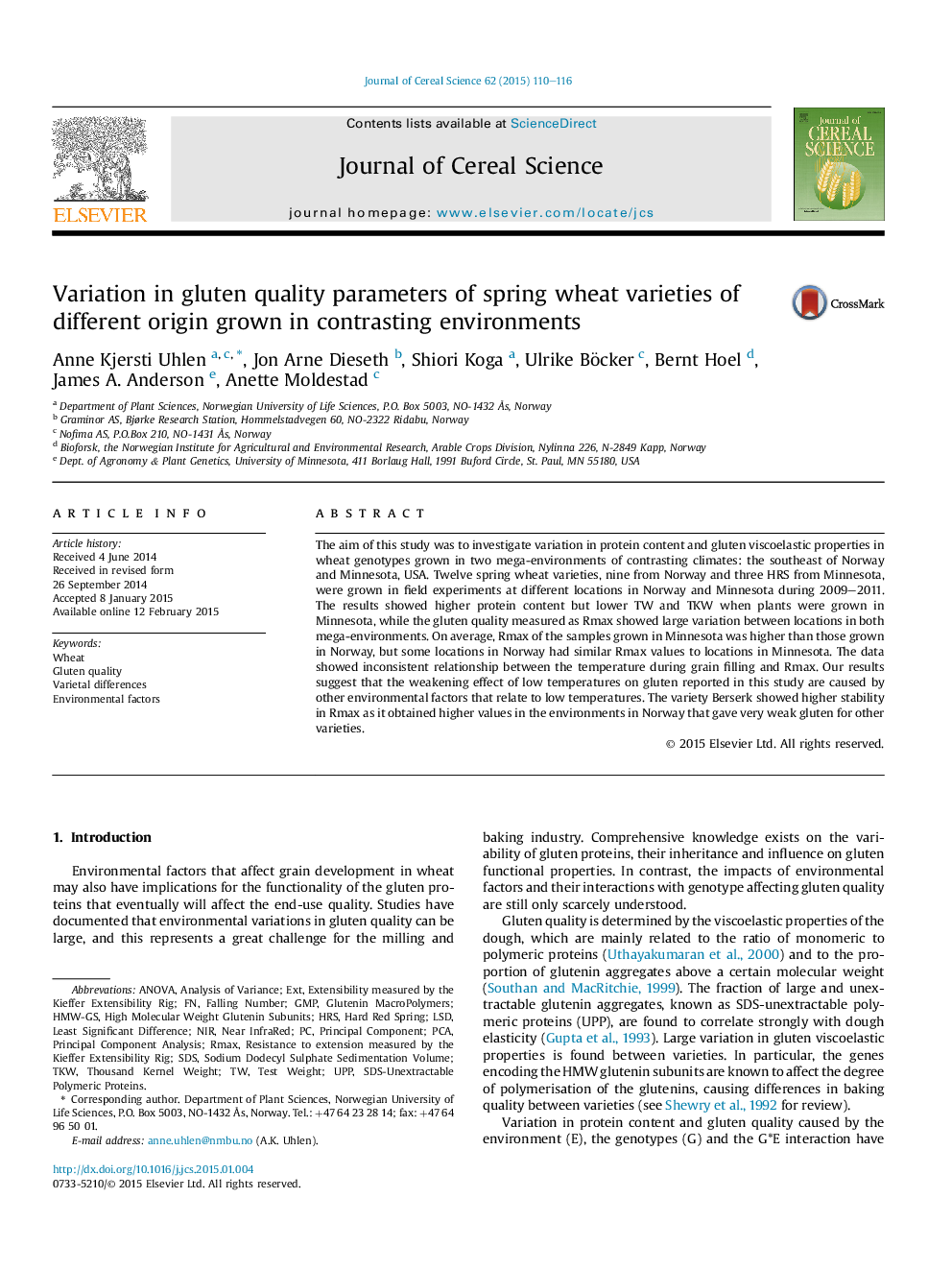| Article ID | Journal | Published Year | Pages | File Type |
|---|---|---|---|---|
| 4515731 | Journal of Cereal Science | 2015 | 7 Pages |
•Gluten quality in wheat grown at locations in Norway and Minnesota was compared.•Gluten resistance to stretching (Rmax) varied largely in both mega-environments.•Locations in Norway provided in some cases similar Rmax values to those in Minnesota.•Consistent relationships between weather parameters and Rmax was not found.•Varieties having stable Rmax under the varying growth environments were identified.
The aim of this study was to investigate variation in protein content and gluten viscoelastic properties in wheat genotypes grown in two mega-environments of contrasting climates: the southeast of Norway and Minnesota, USA. Twelve spring wheat varieties, nine from Norway and three HRS from Minnesota, were grown in field experiments at different locations in Norway and Minnesota during 2009–2011. The results showed higher protein content but lower TW and TKW when plants were grown in Minnesota, while the gluten quality measured as Rmax showed large variation between locations in both mega-environments. On average, Rmax of the samples grown in Minnesota was higher than those grown in Norway, but some locations in Norway had similar Rmax values to locations in Minnesota. The data showed inconsistent relationship between the temperature during grain filling and Rmax. Our results suggest that the weakening effect of low temperatures on gluten reported in this study are caused by other environmental factors that relate to low temperatures. The variety Berserk showed higher stability in Rmax as it obtained higher values in the environments in Norway that gave very weak gluten for other varieties.
